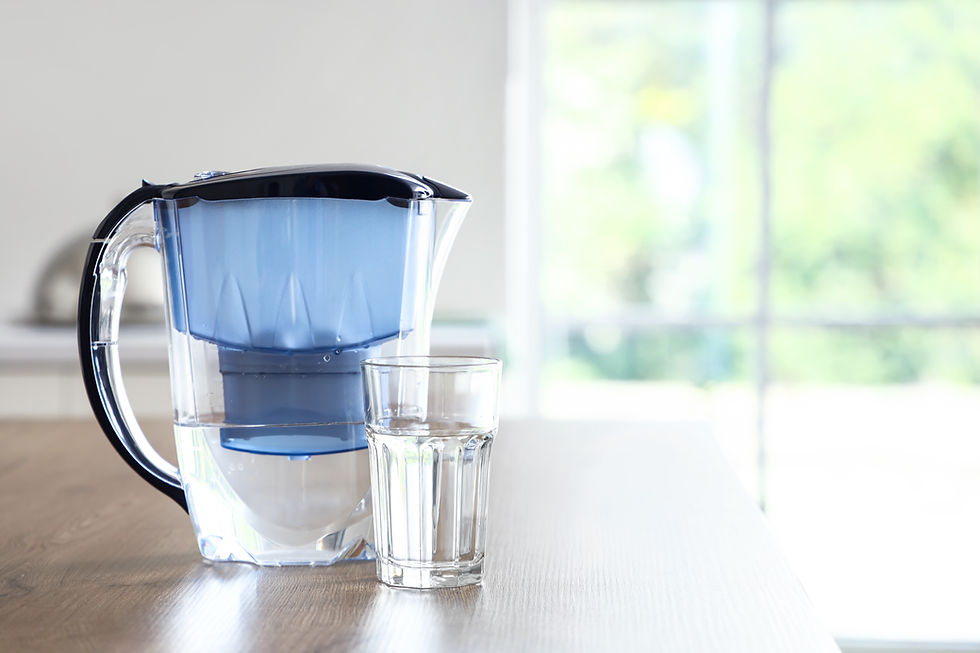Nitrate in tap and bottled water under new suspicion
- Holmblad Water
- Apr 25, 2023
- 2 min read
Updated: Jul 5, 2023

Recent research has raised suspicion regarding the presence of nitrate in both tap and bottled drinking water, suggesting a potential increased risk of prostate cancer. Nitrate, a compound naturally found in groundwater and surface water, can also be present in high concentrations in fertilizers. When agricultural runoff occurs, it can contaminate drinking water sources with nitrate, which, in turn, poses health risks.
The study aimed to investigate the association between nitrate and trihalomethanes (THMs) in drinking water and the risk of prostate cancer. These two contaminants are among the most commonly found in drinking water. Nitrate in water primarily originates from agricultural practices, including fertilizers and intensive livestock farming, with rainfall washing it into aquifers and rivers. Cristina Villanueva, an ISGlobal researcher specializing in water pollution, explained that while nitrate is a natural compound, human activities have disrupted its natural cycle. The study sought to determine whether long-term exposure to nitrate throughout adulthood could lead to cancer.
Researchers from the Barcelona Institute for Global Health (ISGlobal) conducted the study, involving over 1,000 participants. The results indicated that men with higher levels of nitrate in their drinking water had an increased risk of developing prostate cancer. Specifically, those with the highest nitrate levels faced a 38% higher risk compared to those with the lowest levels.
These findings are concerning, considering that prostate cancer is a prevalent form of cancer affecting men worldwide. Although further research is necessary to establish a definitive link between nitrate exposure and prostate cancer, the study's results suggest that limiting nitrate exposure in drinking water may be a prudent preventive measure.
Importantly, these findings extend beyond tap water and also pertain to bottled water. In fact, bottled water may pose an even greater risk of nitrate exposure, as the water source and bottling conditions are not always subject to the same regulations as tap water.
In many cases, bottled water is sourced from areas with elevated nitrate levels, and the plastic bottles themselves may contain chemicals that can leach into the water over time. Therefore, while bottled water may appear to be a safer alternative to tap water, it is crucial to acknowledge the potential risks associated with it.
The ISGlobal study underscores the significance of reducing nitrate exposure in drinking water. Individuals can take simple steps to minimize their exposure, such as using water filters certified to remove nitrates or avoiding bottled water sourced from areas with high nitrate levels.
Further research is needed to fully understand the extent to which nitrate exposure acts as a risk factor for prostate cancer. However, the findings of this study provide compelling evidence of a potential link. Therefore, individuals should proactively take measures to limit their exposure to nitrate in drinking water, prioritizing their health and well-being.
It's worth noting that the EU's current limit for nitrate in drinking water is set at 50 milligrams per liter. However, research from Aarhus University and GEUS in Denmark challenges these limit values, as the study demonstrates that levels as low as 3.87 milligrams per liter, or even lower, can increase the risk of cancer.



The potential risks associated with nitrates in tap and bottled water are a serious concern, as highlighted in this article.
https://reviews.casinoscanada.ca/t/villento-casino-review-is-it-worth-your-time-and-money/15
It's important to be aware of the quality of the water we consume to avoid potential health issues.